
It was back in June 2018 that eCommerce giant Amazon first signalled it was seriously interested in shaking up the pharmacy market when it bought full service digital pharmacy PillPack for over $US750 million. PillPack specialises in shipping prescription medications directly to patients, managing repeats on their behalf and has also developed an automated system to individually sort and label medications for patients to take by time and date.
PillPack has since run into a bit of trouble in the US following a decision by the country's largest electronic prescription exchange service, Surescripts, to end a data-sharing agreement with a third party that has effectively cut PillPack off from patients' medication history, but it's unlikely Amazon is going to give up. The US is the prime market but Amazon has since cast its eye wider, including to Australia.

UK-based private equity firm Hg, which bought the Rhapsody integration engine from developer Orion Health in 2018, has invested in another health IT company in medical imaging solution provider Intelerad Medical Systems.
Montreal-based Intelerad has a number of clients in the local market as well as in the US and Canada for its imaging software and enterprise workflow solutions.
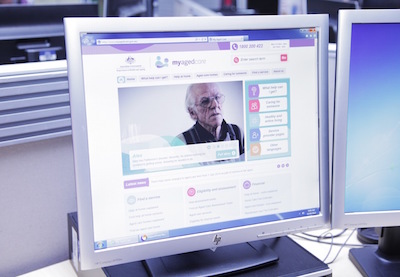
Consumers or their carers are now able to apply for their first aged care assessment online with a new form being made available on the My Aged Care website.
Consumers are still able to apply for an assessment or register for My Aged Care by calling the My Aged Care contact centre.

Patients with acute chronic obstructive pulmonary disease (COPD) being discharged from Dunedin Hospital will receive referrals and advice for correct medicine and inhaler use and a fully funded visit to their GP within 14 days in a new electronic discharge process.
Co-developed by Southern District Health Board and WellSouth primary health network, the new process involves a ‘Click to Tick’ electronic COPD checklist that is filled out by clinicians when the patient is admitted.

Occupational rehabilitation provider Altius Group has shifted its applications into Microsoft's Azure cloud and has rolled out Surface devices for clinicians, allowing them to gather client details, collect signatures and securely sync to the cloud.
It has also moved to Microsoft 365 for its administrative requirements and is rolling out Microsoft's Dynamics 365 customer relationship management platform, integrated with the Teams platform to support client counselling.

Telehealth platform provider Coviu is working with clinical assessment developer Pearson Clinical to enable better access to speech pathology services for children living in rural and remote areas.
Coviu has won a grant from the NSW government to work on the project, which aims to overcome the shortage of speech pathologists able to do face-to-face assessments in regional and remote Australia.

A new full service digital pharmacy called PillDrop has opened in Auckland, allowing patients to take a photo of their original prescription, upload it through an app and have medicines dispensed and delivered to their door.
The service plans to roll out in Christchurch mid-year and other major centres to follow, but it currently offers home delivery nationwide.

Email accounts for 15 Northern Territory Primary Health Network (NT PHN) employees have been compromised in a phishing attack that first occurred last October but was only discovered last week.
The PHN says no sensitive personal information was breached, with the scammers targeting a number of the organisation's debtors with an email falsely claiming the PHN's bank details had changed.

Australia's chief medical officer Brendan Murphy is set to become the new secretary of the Department of Health following the retirement of current secretary Glenys Beauchamp.
Ms Beauchamp announced today that she will retire with effect from February 28 following just over two years in the position.

WA Health has launched a new monthly admitted patient activity summary dashboard that includes information on admissions, bed days, average length of stay and day of admission and discharge.
It joins other key health information being released, including emergency department and elective surgery performance and a new transfer of care time to measure patient handover from ambulance crews to hospital staff.

Kilcoy Hospital in south-east Queensland is trialling a real-time and predictive patient data capture and analysis platform called Patient Status Engine that allows clinicians to access patient dashboards from any browser-based PC.
Developed by UK company Isansys Lifecare, the technology is being brought to Australia by Sydney wearable technology importer and distributor Wearable Health Tech.
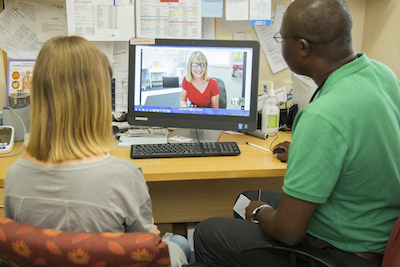
The Central Queensland, Wide Bay, Sunshine Coast PHN has gone to market for an established organisation that can provide after-hours GP consultations by telehealth.
The PHN, which covers a wide area stretching from the Glasshouse Mountains in the south, north toYeppoon and west to Emerald, is open to bids from organisations that can provide telehealth service between 6pm and 11pm on weekdays as well as most of the weekend and public holidays.

The state, territory and federal governments will make it a mandatory requirement that secure messaging interoperability standards are referenced in future procurements of the technology.
The jurisdictions have worked with healthcare peak bodies, the clinical software industry and the Australian Digital Health Agency (ADHA) to co-develop FHIR-based interoperability standards and federated directories for secure messaging over the last few years.

Pulse+IT's weekly round-up of international health IT news for the week ending January 19: Win10 vulnerabilities and health IT, trust in Google Health, Saskatchewan ransomware attack, EOL for Win7, digital wound care tool, Mayo Clinic's AI platform, US health IT strategy, EMR deskwork, EMR search tool, child mental health apps, US DoD's Cerner roll-out, doctor task automation
Why patching windows is so urgent in healthcare sector
Information Security Media Group ~ Marianne Kolbasuk McGee ~ 16/01/2020
The Department of Health and Human Services is alerting healthcare organizations to the urgency of patching the Microsoft Windows 10 severe vulnerability revealed by the National Security Agency and dozens of other vulnerabilities disclosed by Microsoft.

Welcome back to readers from the Pulse+IT team, which has refreshed itself over the summer break by doing a little redesign of the daily eNewsletter for 2020. We've made some improvements to the template so articles can be more easily shared on social channels and so the newsletter can be displayed differently on phones, making mobile reading easier.
We've also redesigned the Pulse+IT Directory, which lists the products and services provided by Australia and New Zealand's leading clinical software and health IT vendors, so take a look around if you are in the market.

Cancer care provider Icon Group has rolled out InterSystems' HealthShare Health Connect integration engine to provide a centralised platform for its major clinical applications.
Icon Group previously used point-to-point interfaces to integrate the 12 major applications and to connect to external healthcare providers at its 36 oncology centres and 60 pharmacies.

Clinical software vendors and practice IT support experts say they don't envisage major problems for medical and allied health practices upgrading from Windows 7 to Windows 10 following Microsoft's official end to support for the 10-year-old operating system this week.
However, experts say the end of support for SQL Server 2008 and Server 2008 R2 may prove to be more of a problem.

Private health fund nib has partnered with US health insurance giant Cigna to create a specialist healthcare data science and services company that aims to analyse members' individual disease risk, develop disease risk profiles and better manage their healthcare.
nib and Cigna have both invested $10 million in the joint venture, which will operate independently of nib and will offer its products to other insurers and government payers and eventually to healthcare provider groups.
The joint venture entity also intends to offer services and health management programs to members in Australia and New Zealand, initially in the areas of mental health and post-hospital discharge planning, nib CEO Mark Fitzgibbon said.
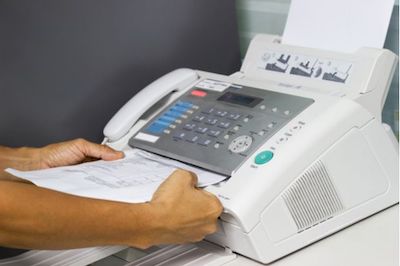
Analogue fax machines will be phased out from the New Zealand health sector by the end of this year, with the Ministry of Health seeking a waiver to allow the use of digital alternatives to faxes for prescriptions.
The ministry is recommending that as well as secure messaging, health agencies use scan to email instead and is mandating that health organisations enable the Transport Layer Security (TLS) encryption protocol on email servers this month.

Medication management software specialist Webstercare has become the first vendor to integrate the new My Health Record pharmacist shared medicines list (PSML), helping community pharmacy Metropolitan Pharmacy Services in Sydney's Leichhardt to upload the first document to MyHR last month.
Webstercare said the PSML will be created each time the pharmacist updates a client’s medication profile in Webstercare's Medication Management Software (MMS), and is uploaded seamlessly in the background to My Health Record.

Digital health, clinical informatics and assistive technologies have the potential to significantly improve the aged care system through increased efficiency and coordination of care providers, the Australian Medical Association says.
Releasing a position statement on innovation in aged care last month, AMA president Tony Bartone said innovation and enhanced technology must be at the core of any reforms to improve the levels of care, compassion and coordination in Australia’s aged care sector.

Diagnostic imaging provider I-MED Radiology Network has partnered with Sydney-based healthcare artificial intelligence firm Harrison.ai to develop technology to improve the delivery of imaging services.
Called Annalise.ai, the joint venture will see radiologists and AI engineers develop prediction engines for imaging modalities such as x-ray, mammography and CT to assist radiologists to efficiently and accurately diagnose diseases and injuries.

Sigma Healthcare has signed a three-year agreement with Scrypt Ventures to roll out its Scrypt HQ dispensary workflow and patient communication tool at Sigma's Amcal, Guardian and Discount Drug Store franchises.
Scrypt HQ platform works with dispensing and dose administration aid software and is aimed at improving patient engagement.

Former Australian Digital Health Agency chief operating officer Bettina McMahon will fill in as interim CEO while the agency undertakes a search for a replacement for outgoing CEO Tim Kelsey.
The agency announced in a statement before Christmas that Ms McMahon does not intend to apply for the CEO role permanently.

The Australasian Institute of Digital Health will launch next month following an overwhelming yes vote by members for a merger between the Health Informatics Society of Australia (HISA) and the Australasian College of Health Informatics (ACHI).
More than 89 per cent of members voted in favour of the proposal, which has been discussed for several years. A consultation round was held last May to gauge member interest and it went to a vote in December.
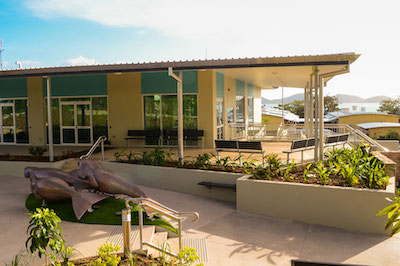
Queensland Health has confirmed it will roll out Telstra Health's Communicare platform for the $35 million Regional eHealth Project (ReHP) in far north Queensland, beginning in mid-2020.
Queensland Health originally chose ISA Healthcare Solutions' MMEx system for the project but it was announced in October last year that the original plan would not go ahead. Instead, project lead agency Cairns and Hinterland Hospital and Health Service (CHHHS) began talks with Telstra Health to use its Communicare community health system.

Changes at the top at Queensland Health, the pause in its patient administration system procurement and delays in its electronic medical record roll-out were some of the most popular stories this year, with the saga of the My Health Record falling out of the top 20 entirely.
An update on Royal Children's Hospital's EMR was a good news story for Epic but the Northern Beaches Hospital EMR experience was not so positive for Telstra Health. Tenders for the Australian Defence Force health record and one for ACT Health were of interest, as was a new tool from HealthShare that can convert patient data into clinical notes.
The suspected Ryuk ransomware attack on several Victorian hospitals and a big debate over the security and privacy of the PIP-QI rounded out the year.

The final quarter of the year began with a worrying ransomware attack on IT systems at a number of hospitals and health services in Victoria, including University Hospital Geelong. The Victorian Cyber Incident Response Service was deployed and worked with affected health services to respond to the attack, and hospitals isolated and disconnected a number of systems and the internet to quarantine the infection.
The attack is thought to involve ransomware called Ryuk coupled with Emotet and TrickBot malware that has been targeting large enterprises internationally, including healthcare systems in the US and Canada. While it does not appear to have affected any patient records or clinical systems, booking and appointment systems were shut off and some surgeries and outpatient clinics had to be postponed. Hospitals reverted to manual processes and paper, and it took up to a week to restore some clinical systems. External email and internet access took longer to restore at some health services.
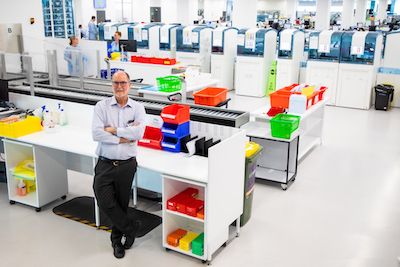
Difficulties with the electronic medical record, paging system and pathology ordering system at Sydney's Northern Beaches Hospital (NBH) dominated headlines in the second half of the eHealth year, with a report from the NSW Health Education and Training Institute (HETI) in July finding that IT woes compounded the staffing issues that had plagued the privately operated hospital since its opening in October 2018.
The HETI report would lead to an upper house parliamentary inquiry, which found that the health information exchange supposed to be giving Northern Beaches clinicians a view into Northern Sydney Local Health District's Cerner EMR did not work, and there was no fax or internet to follow up requests. Public submissions to the inquiry complained of poor communication from the hospital, with local GPs saying they did not receive discharge summaries for six months and in one instance, 650 discharge summaries were posted to a practice months after they were written.
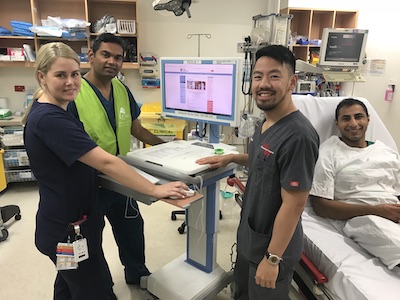
The second quarter of the year kicked off with news that Tasmania was on its way to rolling out a statewide electronic referral system. Local firm Healthcare Software and secure messaging vendor HealthLink won a contract to develop standardised, statewide digital templates that can be auto-populated with key referral details from within GP practice management systems and sent to hospital outpatient departments as well as between private practitioners.
The system will be trialled by two outpatient departments and private providers for six months before being evaluated for a statewide roll-out. Later in the year, South Australia went to market for a similar system that will also handle SA Pathology's results messaging.
The federal budget was released in April due to the May federal election, and the government used it to announce $448.5 million over three years for a new electronic consulting model for patients with chronic diseases under a voluntary enrolment scheme. Initially aimed at people aged over 70, it will also be available for patients with high needs and will allow GPs to provide consultations, referrals, scripts and test results remotely, with usual services continuing to be rebatable for the patient under Medicare. It is due to come into effect in July 2020.

Pulse+IT's most-read article in 2019 by far was the resignation of eHealth Queensland CEO Richard Ashby in January and the decision to not proceed with the procurement of a new patient administration system to replace the aged HBCIS.
The saga was referred to the state's Crime and Corruption Commission, which decided later in the year not to pursue any charges. What to do about the PAS tender was still not resolved at year's end, and in the meantime another stumble for eHealth Queensland came with the mid-year decision to pause the further roll-out of the Cerner integrated electronic medical record (ieMR) to allow it to be optimised in existing sites.
South Australia's PAS and EMR were also in the spotlight, with an independent review chaired by former Telstra Health MD Shane Solomon recommending that the EPAS system needed an overhaul. The review panel recommended that the EMR and PAS be split into two separate projects with an upgrade to the most current version of the software – which was completed in March – and implemented at two exemplar sites in Royal Adelaide Hospital and Mt Gambier. Mt Gambier went live later in the year and the RAH's EMR implementation is proceeding in stages.
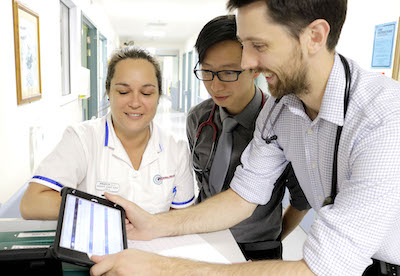
Unlike last year in which the trials and tribulations of Orion Health dominated headlines, this year the big stories focused on the policies being developed by the new data and digital division at the Ministry of Health, including the decision not to proceed with a single electronic health record and instead boost integration capability.
The troubled National Oracle Solution (NOS) was again in the headlines, as were the various exercises by the primary health organisations to choose preferred PMS vendors. Auckland's ProCare decided to favour Valentia Technologies' indici, but Christchurch's Pegasus stumbled with its Sirius program, which was envisaged as a new PMS built on Intrahealth's Profile platform but is now going nowhere.
The year in eHealth was blighted by the cyber attack on Tu Ora Compass Health PHO but there was progress with a number of technology roll-outs, including Zoom at Whangarei, Emergency Q at Waikato, Miya at MidCentral and a GP dashboard for the South Island.
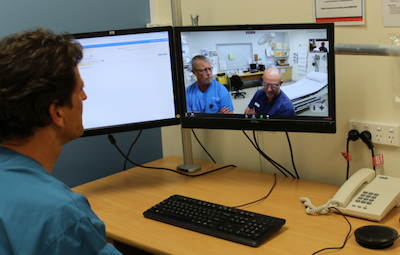
The 2019 year in eHealth in New Zealand kicked off with the much-anticipated announcement that Auckland primary health organisation ProCare had chosen the new cloud-based indici as the preferred practice management system for its 180+ member practices. ProCare had undertaken a year-long review of the existing and new products on the market and decided to join two of the other big four – Pinnacle Midlands and Tu Ora Compass – in plumping for Valentia Technologies' purpose-built system.
While practices can choose for themselves if they want to make a switch to a new PMS, ProCare signed a contract with Valentia in May to pilot it at three practices of various sizes over the following few months. Indici is also now live at 76 Pinnacle sites in the Midland region and is also being rolled out in Wellington.

Pulse+IT's weekly round-up of international health IT news for the week ending December 15: NHS in secret talks with big tech over patient data, digital health formulary, paper scripts and opioids, 11-country survey of GPs on IT, GP genome screening, digital pathology solution, inconsistent EMRs, Amazon's digital voice scribe, five million vets with PHR, spatial computing in healthcare, AI institute
NHS bosses meet with tech giants to discuss commercial patient database
Digital Health News ~ Andrea Downey ~ 12/11/2019
Key players from the NHS, big tech and pharma have held meetings to discuss how to commercialise tens of millions of medical records culled from a massive new proposed national patient record database.
Express Scripts selects first crop of tech tools to include on new digital health formulary
FierceHealthcare ~ Paige Minemyer ~ 12/11/2019
America’s largest pharmacy benefit manager announced in May that it intended to create an industry-first digital health formulary to make it easier for health insurers to vet the tools for their members, especially as the number of solutions available in the market continues to grow.

As the year draws to a close so has Tim Kelsey's time at the Australian Digital Health Agency. Mr Kelsey is off to do something exciting in analytics at HIMSS, best known for its digital adoption maturity models, but he will remain living in Australia so we expect him to pop up now and then in Pulse+IT.
In a sign-off email, Mr Kelsey said he was proud of what had been collectively achieved at ADHA, including that Australia has a national digital health strategy which all its governments have agreed to. Mr Kelsey was predominantly responsible for writing that strategy and it's quite a good one, with defined steps and timelines that might be achievable with the right will.

Royal Melbourne Hospital is rolling out Butterfly iQ portable ultrasound devices that allow whole body ultrasound to be done at a fraction of the cost of traditional ultrasound.
The device connects with smartphones so staff can use it anywhere in the hospital and it can scan for leaks, murmurs, abnormal rhythms and other problems in the heart, lungs and other parts of the body.

Osler Technology has released a new version of its clinical portfolio app featuring a new integration with Apple's Siri virtual assistant that enables users to capture CPD events, create patient cases, log procedures and capture scratch notes with voice control.
Osler has also released a new skills matrix that allows departments to manage the training and credentialing needs of junior staff from the palm of their hand.

GPs in the ACT and surrounding areas of NSW who refer patients to Canberra Hospital public outpatient and community services can now use an eReferral SmartForm from HealthLink and submit it from within their practice management system.
ACT Health's digital solutions division has worked with HealthLink, Canberra Health Services (CHS) and a group of Canberra GPs to trial the new capability for two months. Following the success of the trial, it is now being rolled out to other referrers in the region.

Medical specialist practice management system vendor Shexie has partnered with 1st Group to offer Shexie users the MyHealth1st online booking platform and the new EasyReferrals system that is being rolled out to specialists in the St Vincent’s Health’s network.
The new MyHealth1st EasyReferrals product is powering the recently launched StVincentsPriority.com.au directory service and allows GPs and patients to search and book appointments with specialists online.

Fullerton Health Australia will roll out MetaOptima Technology's DermEngine AI-powered software at its Molescan skin cancer clinics and medical centres, joining Healius and Sonic Healthcare in implementing the system.
Powered by artificial intelligence, DermEngine’s software is designed to help medical professionals manage busy workflows with secure cross-platform access for the imaging, documentation and diagnosis of skin conditions including skin cancer.

ASX-listed online booking and directory service 1st Group has gone live with phase one of its implementation with St Vincent’s Health Australia, allowing GPs and patients to search and book appointments with St Vincent's Health specialists and attach referral documentation to the booking.
The new St Vincent's Priority service is live at three of the 10 St Vincent's private hospitals with the rest to come online over the next few months in phase two of the project.


Sydney's Castle Medical Holdings has launched a new app providing on demand injury management for workplace triage as well as traditional video consult services.
Designed with GPs from the company's Castle Hill Medical Centre, the Any Hour GP (AHGP) app provides subscription services to organisations seeking to manage workplace injuries instantly by providing on demand triage services from a GP.

Auckland-based secure messaging vendor HealthLink and health insurance claims integrator Konnect NET are merging to form a new organisation called Clanwilliam Health.
Both companies are part of the Irish Clanwilliam Group family of businesses, which bought HealthLink in 2017 and Konnect NET in 2018.

Update: Australian Digital Health Agency CEO Tim Kelsey has resigned after three years, announcing today that he will be taking up a new role with the Healthcare Information and Management Systems Society (HIMSS) involving digital strategy development.
Mr Kelsey will finish up at ADHA on January 17 and the agency plans to appoint an interim CEO while a replacement is recruited.

Pulse+IT's weekly round-up of international health IT news for the week ending December 8: Case for ADT alerts, Halamka moves to Mayo, depression apps, telehealth improves access, telehealth for acute psychiatry, Agfa selling health IT business, Cerner prefers AWS, Tetris malware, data breach suits, cloud-based imaging, Amazon Transcribe Medical
Farzad Mostashari, Claudia Williams make the case for requiring hospital ADT alerts
FierceHealthcare ~ Farzad Mostashari and Claudia Williams ~ 04/12/2019
Through new proposals to its Interoperability & Patient Access to Health Data Rule, the Centers for Medicare & Medicaid Services has outlined a smart strategy of simply requiring that hospitals provide these notifications if they want to receive reimbursement from Medicare or Medicaid.
Halamka to join Mayo Clinic and lead its digital health effort
Health Data Management ~ Greg Slabodkin ~ 04/12/2019
John Halamka, MD, will be heading up the Mayo Clinic Platform, an initiative meant to elevate the provider to a global leadership position within digital healthcare.

It has taken well over a year but it appears that the Australian Digital Health Agency's plans to allow mobile apps to access the My Health Record are getting back on track.
The agency closed off new entrants to the mobile gateway in August 2018, at the height of the drama over the first opt-out period. At that time, one of the four apps with portal operator status, Tyde, was forced to re-evaluate its business model when changes were made to legislation to prevent insurance companies from handling My Health Record data.

The Australian Digital Health Agency plans to reopen the mobile gateway that allows third-party mobile apps to interact with the My Health Record early next year following an independent review of its safeguards for protecting people's information.
ADHA stopped taking new entrants to the mobile gateway in August 2018 and one existing app has subsequently gone out of business. The apps that currently have access to the My Health Record are Chamonix's Healthi, HealthEngine and Telstra Health's HealthNow.

Electronic medical record vendor Cerner has named Amazon Web Services as its preferred provider of cloud, artificial intelligence and machine learning services in a multi-year agreement that will see the EMR giant migrate its core applications to AWS.
Cerner says the agreement will see it offer providers and healthcare organisations the ability to access clinical data in new ways for faster innovation and to improve quality of care.

The Health Informatics Society of Australia (HISA) and the Digital Health Workforce Academy have released a white paper on the implications of digital health for the healthcare system.
Written by HISA board member and Digital Health Workforce Academy founder David Rowlands, the white paper is aimed at provoking a discussion around the meaning of and implications for digital health.
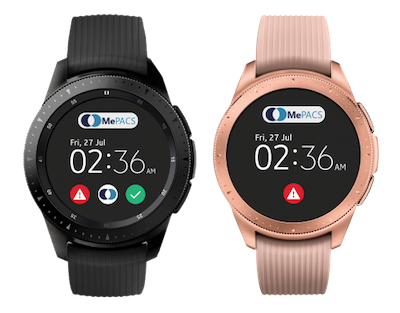
La Trobe Community Health and Eastern Health are about to begin trialling a new duress alarm for staff visiting patients in the community that runs on a Samsung Galaxy Watch and is linked to Peninsula Health’s MePACS personal alarm service.
Called the MePACS Solo, the device has been developed by Samsung Electronics Australia and Vault Intelligence in association with Peninsula Health. Peninsula Health has been running MePACS for the last 30 years and provides personal alarm call services to elderly and disabled people living at home.

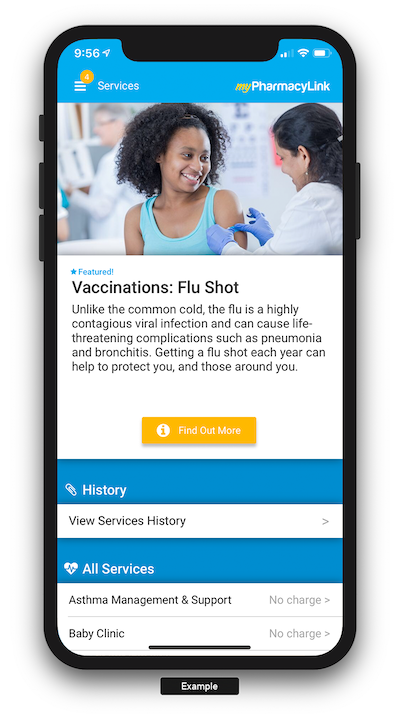
The Pharmacy Guild's technology arm GuildLink has added two new features to its free patient app myPharmacyLink, including one to promote professional services and the other to boost customer engagement.
The myPharmacy Services and myPharmacy Team features are already enabled within the GuildCare NG professional services platform and have this week been enabled in myPharmacyLink as part of its most recent update.

St George's Hospital in Christchurch is live on one ward with the first phase of its new digital medical record from Vitro Software, which has digitised 25 applications on an end-of-bed chart that can be accessed remotely.
Vitro has converted the paper forms used by clinicians into digital apps covering observation and monitoring documentation, the National Early Warning Score and mandatory escalation pathways.

Researchers from Melbourne's Peter MacCallum Cancer Centre have been trialling IBM's Watson artificial intelligence technology to see if they can better match cancer patients to relevant clinical trials.
In a recent retrospective study, the Peter Mac researchers used past records of 102 lung cancer patients and matched each patient to 10 potential trials using IBM Watson for Clinical Trial Matching, which helps optimise trial recruitment at the point of care.

Medical practice software vendor Shexie has released a new online patient forms functionality for its Platinum clinical and practice management system, allowing patients to fill in their details online from home before their appointment or in the waiting room.
The forms are configurable with a number of fields to choose from and are created and maintained within Shexie's Client Portal.

ASX-listed digital health company ResApp is working with telehealth software developer Coviu to integrate ResApp’s acute respiratory diagnostic app into Coviu’s platform to help clinicians diagnose respiratory disease in a telehealth setting.
ResAppDx-EU is a TGA-approved smartphone app that uses machine learning algorithms that analyse a patient’s cough sounds to diagnose disease.

Electronic patient-reported outcome measures (ePROMS) specialist eHealthier is set to launch a new platform of apps aimed at general practice to introduce PROMs into day-to-day clinical care in the primary care setting.
The Sydney company is also developing a questionnaire aimed at primary health networks (PHNs) to do population surveys for health needs assessments, along with a separate one for state health departments and local health districts for their data requirements.

Pulse+IT's weekly round-up of international health IT news for the week ending December 1: Google's data aggregation tool, Alexa for medication adherence, home UTI kit with app, NHS staff think big tech is dodgy, AI predicts immunotherapy response, FHIR needs funding, skin cancer apps valuable, aged care facilities hit by Ryuk
Google Health unveils EHR data aggregation tool for clinicians
Digital Health News ~ Owen Hughes ~ 27/11/2019
Google Health is working on a new EHR-like tool capable of pulling data from various clinical systems into a unified interface.
Amazon launches new Alexa feature that reminds customers when to take meds
MobiHealthNews ~ Laura Lovett ~ 26/11/2019
Amazon is jumping into the medication adherence space with a new feature that lets users link up their pharmacy prescription information and, in turn, get reminders about when to take their pills and order refills.

This week the Australian National Audit Office released its much-anticipated report into the effectiveness of the implementation of the My Health Record by the Australian Digital Health Agency and the Department of Health.
The audit mainly looked at the implementation over the opt-out period rather than the distant days of the opt-in Pecker (PCEHR), and apart from a few security stumbles, the ANAO gave it a pretty clean bill of health.

Telehealth software platform Coviu has launched a bookable telehealth directory to help consumers find healthcare providers who offer video consults online.
Launched initially with a specific focus on providing mental health services, Coviu's Online Doctor’s Directory is also open to all clinicians who provide their services via telehealth, including psychiatrists, psychologists, GPs, physiotherapists and speech pathologists.

ACSS Health has rolled out its SimDay patient administration system (PAS) to all five of Healius' day hospitals, joining Nexus, Cura, Presmed and Virtus Health in using the system.
ACSS is also testing out its a cloud version of SimDay at three hospitals with plans to officially launch the system early in the new year.

Fred IT's general manager for eHealth David Freemantle was elected vice president of the Medical Software Industry Association (MSIA) at its annual general meeting this week.
Mr Freemantle takes over from HealthLink's Tom Bowden in an otherwise unchanged board executive, with MIMS' Robert Best returning as president, Best Practice Software's Lorraine Pyefinch as secretary and Civica Care's Craig Porte returning as treasurer.

Industry peak body the Aged Care Guild and customer experience monitoring and tracking platform CarePage have got together to launch the Happy Life Index, a benchmarking tool being offered to aged care providers to measure and report on quality of life indicators for aged care residents and their families.
The tool is powered by real-time feedback and aims to help providers understand their performance against quality of life and experience indicators that can be improved, including food quality, care quality, friendliness of staff, activities and lifestyle, environment and cleanliness, and management.
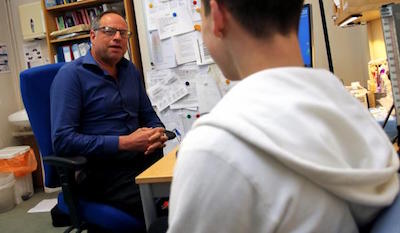
Northern Sydney Local Health District (NSLHD) has become the first LHD in NSW to begin sending patient letters to GPs electronically through the state's HealtheNet portal.
General practices using the HealthLink, Argus or Medical-Objects secure messaging services who are also receiving hospital discharge summaries electronically will already be set up to receive the new letters directly in their clinical software.

International healthcare IT security company Imprivata has partnered with Australia's Modeus to improve authentication workflow for Modeus' HS8 electronic controlled drug management system.
HS8 will be integrated with Imprivata's Confirm ID identity and authentication workflow to enable hospital clinicians to confirm HS8 register entries via a via fingerprint or a card tap instead of either paper-based signing of the drugs-of-dependence (DD) book, or entering a username and password.

New Zealand's health data research initiative Precision Driven Health (PDH) is working with skin cancer clinic and technology provider MoleMap on its artificial intelligence algorithms to help improve the early detection of skin cancer.
The $2 million research project aims to enhance the AI algorithm that MoleMap has developed to differentiate cancerous skin lesions from benign lesions and will include clinical trials in NZ and Australia.

Tasmanian software vendor Snug Health has launched a mobile personal health record (PHR) app called Snug with the aim of bringing all of a person's health and wellbeing information together in one place.
The app is integrated with medical devices such as blood pressure and blood glucose monitors, has direct access to Apple Health and Google Fit and can take data from about 1000 health devices such as Garmin, Fitbit and iHealth.

The Australian Digital Health Agency (ADHA) did not manage shared cyber security risks concerning third-party software vendors and healthcare provider organisations appropriately during the My Health Record implementation and needs to make improvements, an Australian National Audit Office (ANAO) audit has found.
And while the audit found that ADHA’s management of privacy risks was largely appropriate during the period, the ANAO has recommended that ADHA undertake another privacy risk assessment of the operation of the system.
Overall, the audit found that the implementation of My Health Record was largely effective, with appropriate implementation planning, governance and communication.

Health insurance claims and payments solution HICAPS has partnered with digital health company HealthShare to help private health fund members find a healthcare provider who offers HICAPS in their practice.
The partnership will also allow HICAPS provides to set up a free HealthShare profile that allows them to add information about their services, including practice locations, special interest areas and languages spoken.

Pulse+IT's weekly round-up of international health IT news for the week ending November 24: EMR safety investigation, Google's new charting tool, paracetamol overdosing tool, Swahili version of Ada Health app, in-home monitoring for diabetic foot ulcers, health insurer Humana using FHIR, paramedics using emergency callers’ phones, vulnerabilities in medical devices, FDA clears AI in diagnostic imaging
No safety switch: How lax oversight of EHRs puts patients at risk
Kaiser Health News ~ Fred Schulte and Erika Fry ~ 21/11/2019
The group envisioned creating a national databank to track reports of deaths, injuries and near misses linked to issues with the new technology. It never happened.

Pulse+IT had a whale of a time consorting with assorted hobbits this week at the HiNZ conference in Hamilton, which managed to attract a remarkable 1440 attendees and over 100 exhibitors. No offence to Hamiltonians but its proximity to Hobbiton and the conference venue are two of the main things likely to tempt people to visit the town so it's a good thing that HiNZ is returning there next year.
NZ Health Minister David Clark and Ministry of Health deputy D-G for digital Shayne Hunter showed up and both seemed pretty confident that the business case for a national health infrastructure platform (nHIP) would get up and begin a roll out later in 2020. Mr Hunter confirmed that the idea touted by the previous health minister at HiNZ in 2015 for a single, national electronic health record would not go ahead.

New Zealand's Ministry of Health has embarked on a three-year initiative to assess the digital maturity of its health services using four Healthcare Information and Management Systems Society (HIMSS) digital adoption and maturity models.
The initiative has been piloted in two DHBs this year with one in progress and two about to begin, to be followed next financial year by five more DHBs. The remaining 10 are hoped to be completed in 2020-21.

Members of the Health Informatics Society of Australia (HISA) and the Australasian College of Health Informatics (ACHI) will vote in December on a proposal to merge to two organisations and form a new peak group for digital health and health informatics, to be named the Australasian Institute of Digital Health.
HISA and ACHI have been in discussions for several years about merging and began a consultation round in May to gauge member interest.

Australian Digital Health Agency chief operating officer Bettina McMahon has tendered her resignation after 10 years with the agency and its predecessor NEHTA.
An ADHA spokesperson said Ms McMahon will be leaving early in the new year and recruitment to fill the role will begin soon.
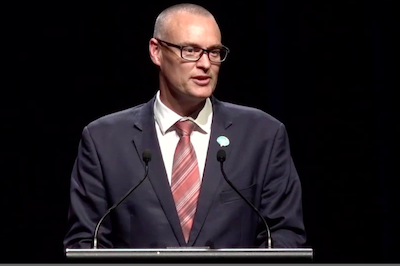
A business case for New Zealand's proposed national health information platform (nHIP) is due to be delivered to the government for cabinet approval next February with the intention that it begin an incremental roll out in the next financial year, a Ministry of Health official says.
The government has also set up an interim digital investment board with the intention to appoint a permanent board by the middle of next year that will provide advice on how digital and data can transform the health sector and prioritise investments.

Healthcare software and services vendor Alcidion has launched a mobile clinical app called Miya MEMRe that allows clinicians to review their current activity and caseload, be notified of critical issues and access patient records on the go.
Built on Apple's iOS platform to take advantage of its familiar interface and promising interoperability with EMRs and other clinical systems, Alcidion says Miya MEMRe is the first mobile EMR solution using Fast Health Interoperability Resources (FHIR) clinical events in Australia.

Valentia Technologies has integrated its cloud-based indici practice management system with the Healthpoint directory of New Zealand healthcare services, which has been enabled using a FHIR-compatible application programming interface gateway.
Valentia also announced this week that it was collaborating with Australian secure messaging vendor Medical-Objects to increase the range of HL7 secure health information exchange options available in the New Zealand market.
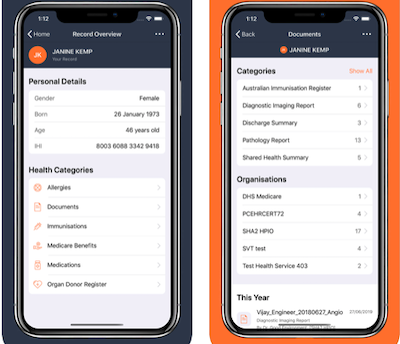
Adelaide IT consulting firm Chamonix Health has launched version 4.0 of its Healthi app, which provides mobile access to the My Health Record on Apple and Android devices.
New features include the ability to sign in to My Health Record via an email address or mobile number, with two-factor authentication if the user has it enabled in myGov. Pathology and diagnostic imaging reports are also now available and personal details such as date of birth date and IHI are available on the Record Overview.

BreastScreen Victoria (BSV) plans to roll out a new digital medical record from Vitro Software at its reading and assessment services following a pilot at St Vincent's Hospital in Melbourne.
The pilot saw the conversion of paper records to a fully digital system co-designed with BSV's radiologists, radiographers, nurse counsellors and data and administrative staff that includes breast screening apps and a patient journey board.
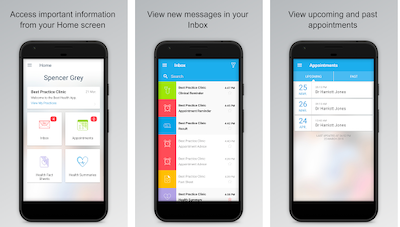
Clinical and practice management software vendor Best Practice Software has launched its Best Health app, which has been designed to allow practices to better communicate with patients.
Phase 1 of the app lets the patient view their upcoming appointments, book online appointments if the practice uses an online appointment vendor, receive and respond to appointment reminders and check-in for their appointments.

New Zealand pharmacists using the RxOne dispensing system will be able to view patient clinical notes within the indici GP practice management system in real time while dispensing following an integration between vendors Valentia Technologies and RxOne Technologies.
Valentia has released a FHIR-based extension called PharmacyConnect that will also allow GPs using indici to consult with RxOne pharmacists in real time about medication management options. Pharmacists can also contribute to clinical notes in indici.
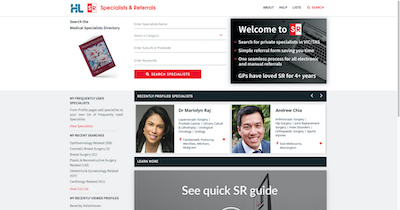
Secure messaging vendor HealthLink has integrated with an online version of the Medical Specialists Directory for easier electronic referrals for GPs in Victoria and Tasmania.
Called SR Specialists & Referrals, the new functionality is available to GPs using the Best Practice or MedicalDirector practice management systems, with specialists able to receive the eReferrals via their HealthLink account.

Pulse+IT's weekly round-up of international health IT news for the week ending November 17: Germany legislates for digital health, NHS burned by vendors, F for EMRs, faxes still a fixture, analogue switch-off, school-based telehealth, HIMSS supply chain maturity model, training for EMR satisfaction, Apple Research app live
Germany introduces Digital Supply Act to digitalise healthcare
Healthcare IT News ~ Tammy Lovell ~ 13/11/2019
Doctors will be able to prescribe digital health apps to patients, which can be reimbursed. The legislation also aims to phase out the use of paper by promoting e-prescriptions and providing doctors with higher reimbursement for sending electronic medical letters than for faxes.

The most popular story this week on Pulse+IT was our chat with some of the medicines safety team from the Australian Digital Health Agency, who fleshed out the expected structure of the new electronic prescriptions network that should begin in earnest in the new year.
The plan is for a small implementation in one rural area, probably in Tasmania and probably involving Fred IT, before the roll-out gathers pace and eScripts eventually become business as usual. The network will use existing infrastructure such as the two prescription exchange services eRx and MediSecure, but the ADHA team was keen to emphasise that it expects the new capability to attract new entrants into the market, as well as a proliferation of medication-related apps.

Health Navigator and Health Literacy NZ have got together to develop a new self-management support (SMS) website to provide tools for healthcare professionals to help their patients with long-term condition self-management.
Funded by the Ministry of Health, the site includes sections and training modules for care planning, health literacy, goal setting, positive behaviour change, social support and group visits.

The national bowel cancer screening program (NBCSP) is transitioning over to the National Cancer Screening Register (NCSR) this weekend, with the national register officially operating the bowel register from Monday, November 18.
The Department of Health is promising functional improvements to the Telstra Health-developed system from next March, when the register will be integrated with primary care practice management systems and online participant and healthcare provider portals will go live.

Electronic medications charting solution Medi-Map has become the first cloud-based medications system to achieve New Zealand ePrescription Service (NZePS) certification, allowing GPs to chart and produce a script at the same time which is then automatically sent to the pharmacy.
The Christchurch-headquartered company is also piloting its system across addiction services in New Zealand to handle methadone prescribing following work at Capital and Coast DHB, and shortly Canterbury DHB and is also involved in a trial of paperless claiming at four residential aged care sites in Australia.

eReferral software specialist MEDrefer has teamed up with enterprise content management solutions vendor Hyland Healthcare to provide a joint offering to hospitals to better manage the referral process between primary and acute care.
MEDrefer offers a free eReferral service to GPs that allows them to find and select an appropriate specialist or allied health professional and track that referral, with specialist practices able to review the referral before accepting or declining it. This capability has now been extended to include the central intake and triage models commonly used by hospitals and PHN-funded mental health programs.

The first transmission of an electronic script under Australia's new ePrescribing network is most likely to happen in the first quarter of next year, the Australian Digital Health Agency (ADHA) is forecasting.
eScripts are now a legal alternative to paper scripts under amendments to legislation passed by the federal government recently, and ADHA has also released the solution architecture and software conformance framework for the new network.

ACT Health is beginning the roll out of its new queue management and electronic wayfinding kiosks across its public health facilities, including the Canberra Hospital, the University of Canberra Hospital and its community health centres.
Device Technologies won a $1.8m contract last year to implement its InTouch range of kiosks and flatscreen devices and to build a queue management solution, which includes an HL7 interface to the territory's patient administration system ACTPAS.

Imaging software specialist Intelerad Medical Systems has launched a new artificial intelligence-augmented workflow solution called Odyssey which it says is designed to encourage the adoption of AI in radiology without the prohibitive costs.
It has also launched a rules-based AI workflow orchestrator called Odyssey Navigator that works in conjunction with Intelerad’s Clario SmartWorklist and uses custom criteria set to determine when cases are sent to the clinical AI engine for analysis.

Medical software vendor Clinic to Cloud has teamed up with the National Association of Specialist Obstetricians and Gynaecologists (NASOG) to offer members workflows and features specifically tailored for obstetricians and gynaecologists.
The partnership uses Clinic to Cloud’s technology and includes a comprehensive obstetric module that has the ability to create a birth record from a smartphone, along with smartphone access to schedules, clinical records and electronic tasks and integrated lab results that flow onto a smartphone and include decision support.

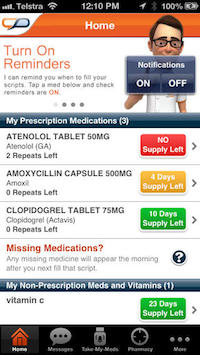
Medications adherence solution developer MedAdvisor has signed a two-year deal with Sigma Healthcare to provide custom-branded versions of its mobile app for promotion and use by a number of Sigma brands.
Sigma has more than 600 pharmacies in its network under the Amcal, Guardian, Discount Drug Stores, PharmaSave, WholeLife and Chemist King brands.
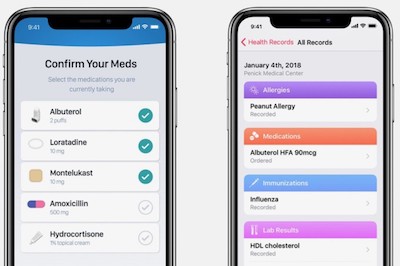
Pulse+IT's weekly round-up of international health IT news for the week ending November 10: VA joins Apple Health, eHealth in Estonia, Netherlands and Scandinavia, NpfIT culture lingers, Alberta live with $C459m Epic system, Carnet santé Québec disappoints, Germans dissatisfied with digital progress, $US75m for PathAI, big take-up for US secure messaging, NHS pagers leaking data, Google and Fitbit, Orion in the UK
Apple adds VA to its list of organizations making data available on its Health Records
MedCity News ~ Arundhati Parmar ~ 06/11/2019
The partnership was previously announced but now all veterans who get their care from any VA hospital and use iPhones can see that data alongside other health data in Apple's Health Records section of the Health app.
Estonia, the Netherlands & Nordics continue to drive eHealth adoption and use in Europe
Healthcare IT News ~ Leontina Postelnicu ~ 07/11/2019
The world has long looked at the Nordics as an example for driving much of the innovation that is happening nowadays, and the situation is no different in digital health, according to a new study from HIMSS, in cooperation with McKinsey.

As expected, the roll out of electronic prescriptions in Australia will not be as fast as health minister Greg Hunt was spruiking back in July, but this week we have seen substantive moves towards a national ePrescription system with the federal government gazetting the legality of eScripts alongside paper scripts in federal legislation.
The Australian Digital Health Agency has also published the solution architecture and conformance requirements for prescribing and dispensing software, which it has co-designed with the medical software industry and healthcare provider organisations. It will be another year at least before consumers are using the capability – ADHA told us this week it is targeting June 2022 for a full implementation, as per the national digital health strategy – and there are hopes for a small start early next year in a rural and a metropolitan setting.

The federal government has made the necessary changes to legislation to make electronic prescriptions a legal alternative to paper scripts.
The changes were promised in the 2018-19 federal budget, with $15.3 million allocated to introducing a national system that will allow prescribing doctors to use their clinical software to issue an eScript as a legal form of prescription.

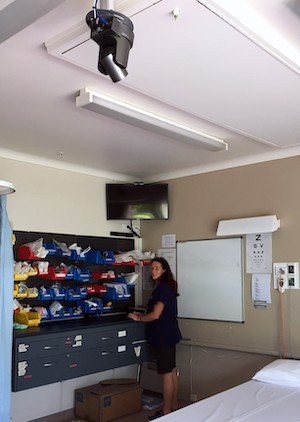
Northland District Health Board has rolled out a new acute care telehealth network using Zoom video conferencing to link its rural hospitals to the intensive care unit at the DHB's main referral centre at Whangarei.
The service uses purposely designed clinical carts that are easy to manoeuvre and suitable for use in acute clinical environments and which allow for remote patient assessment and management by clinicians at Whangarei ICU, who are able to have complete control of the technology. It also provides Whangarei Hospital with an after-hours telestroke service.

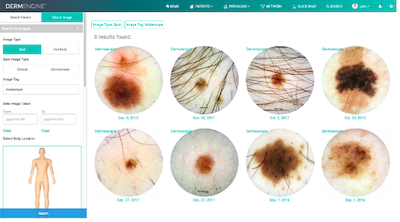
Pathology and medical centre giants Healius and Sonic Healthcare are both rolling out MetaOptima Technology’s DermEngine software at their skin cancer clinics.
DermEngine is now live at Healius' Skin2 clinics and Sonic is planning to roll it out at its Australian Skin Cancer Clinics and IPN family medical centres network.
Copyright © 2025 Pulse IT Communications Pty Ltd. No content published on this website can be reproduced by any person for any reason without the prior written permission of the publisher. If your organisation is featured in a Pulse+IT article you can purchase the permission to reproduce the article here.
Website Design by Get Leads AU.